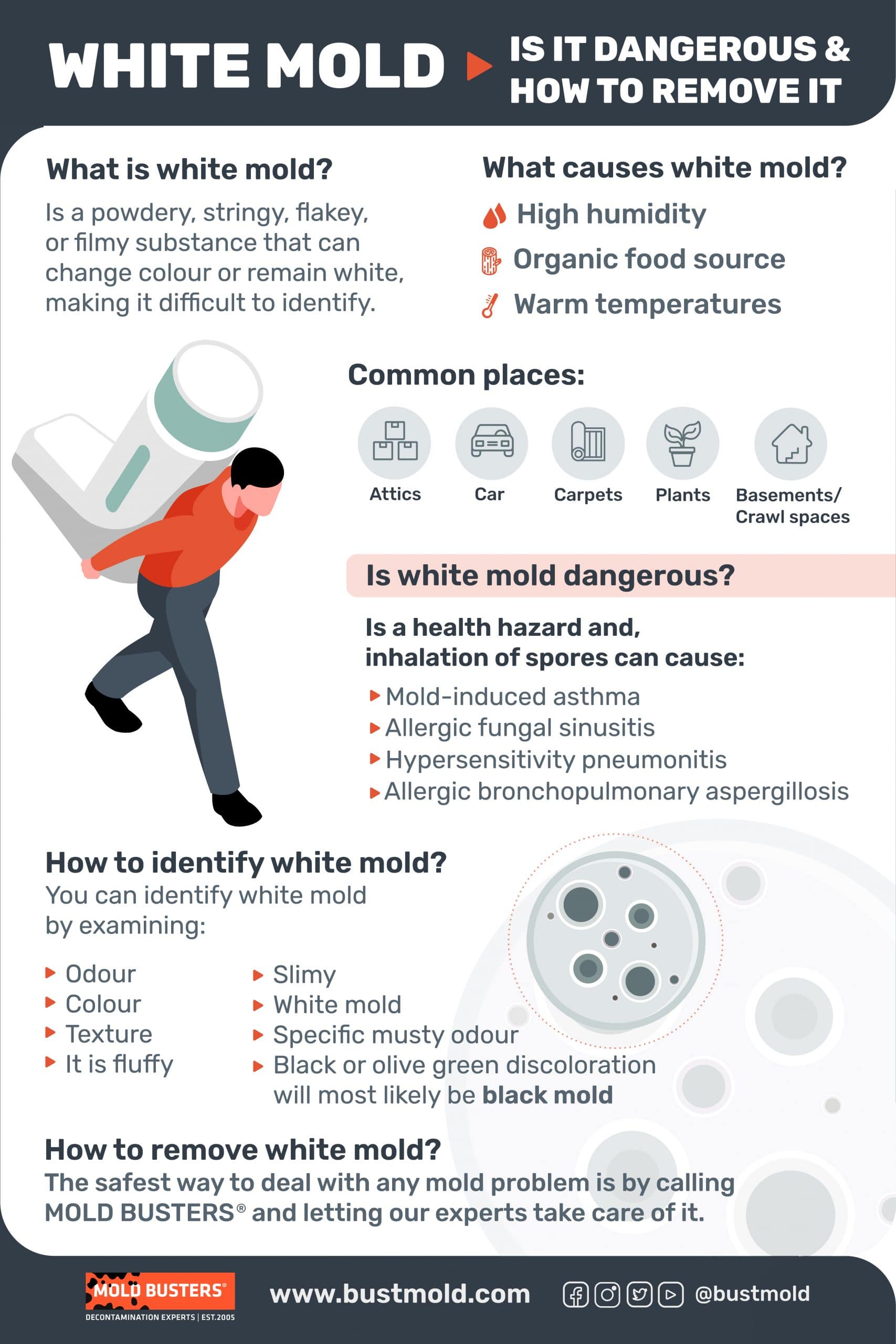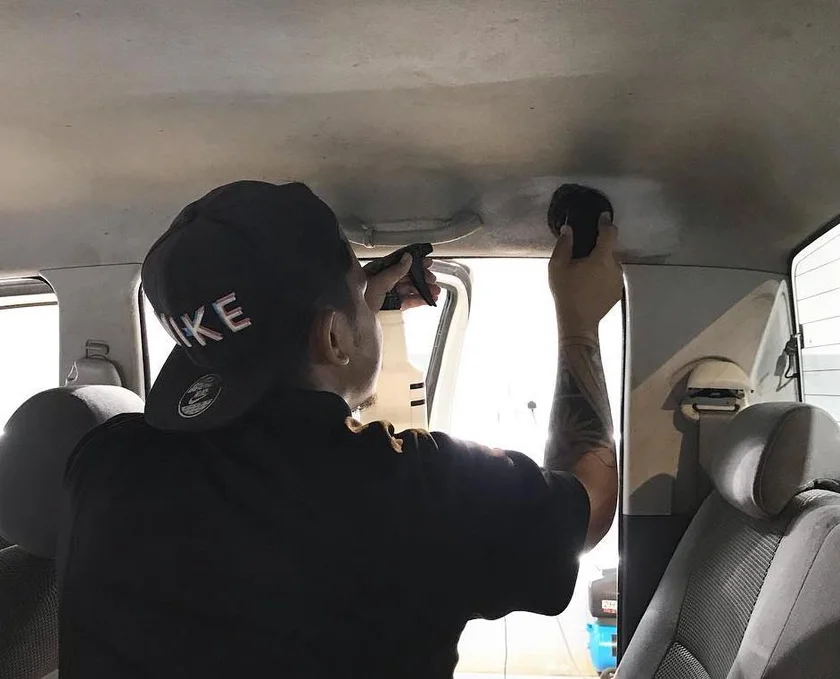To kill mold in a car, use a mixture of vinegar and water or a commercial mold remover, scrub the affected areas, and ensure thorough drying. Mold in cars is a common problem caused by dampness and can lead to health issues and unpleasant odors.
Taking immediate action to address mold growth is crucial to prevent further damage and maintain a clean, healthy environment inside the vehicle. Whether using homemade solutions or commercial products, regular cleaning and moisture control can help keep the car mold-free.
By following these steps, you can effectively eliminate mold and ensure a fresh and hygienic car interior.

Credit: theadventureportal.com
Identifying Mold In A Car
Mold growth in a car can cause a variety of health problems and unpleasant odors. Taking prompt action to identify and remove mold is essential to maintain a clean and healthy vehicle environment. In this section, we will discuss common signs to look for when identifying mold in a car and the areas that are most prone to mold growth.
Common Signs Of Mold Presence
Mold typically thrives in dark and damp environments, making a car an ideal breeding ground. Here are some common signs that indicate the presence of mold in your vehicle:
- Visible mold growth: Look out for fuzzy or discolored patches on surfaces such as seats, carpets, and dashboard.
- Unpleasant odor: Mold has a distinct musty smell. If your car has a persistent odor that doesn’t go away with regular cleaning, it could be a sign of mold.
- Allergic reactions: If you or your passengers experience unexplained allergic symptoms such as sneezing, coughing, or irritated eyes when in the car, it could indicate mold contamination.
- Excessive moisture: Excessive condensation on windows, wet carpets, or water stains can create an ideal environment for mold growth.
Areas Prone To Mold Growth
Mold can grow in various areas of your car. Being aware of these mold-prone areas can help you identify and tackle the problem effectively. Here are some areas to pay close attention to:
| Area | Description |
|---|---|
| Carpet and Upholstery | Mold can easily grow on damp and dirty carpets and upholstery. |
| Air Conditioning System | The cooling system of your car can accumulate moisture, providing an ideal environment for mold to grow. |
| Trunk | Moisture from wet items, like umbrellas or gym bags, can promote mold growth in the trunk of your car. |
| Dashboard and Interior Trim | Cracks, crevices, and poorly sealed areas on the dashboard and interior trim can trap moisture and become hotspots for mold. |
| Headliner | The fabric covering the ceiling of your car can absorb moisture from rain, spills, or interior leaks, resulting in mold growth. |
Identifying the signs of mold presence and knowing the areas prone to mold growth are crucial steps in effectively combating mold in a car. Swift action is important to prevent further contamination and maintain a healthy driving environment.
Effective Mold Remediation Techniques
Looking to kill mold in your car? Discover effective mold remediation techniques to get rid of mold and prevent its growth, ensuring a clean and healthy environment inside your vehicle.
Gathering The Necessary Supplies
Before starting the mold removal process in your car, it’s crucial to gather the necessary supplies to ensure an effective and efficient remediation. Here’s a list of items you’ll need:
| Supplies | Importance |
|---|---|
| Protective clothing (gloves, goggles, mask) | To protect yourself from mold spores and cleaning chemicals |
| Mold-specific cleaner | To effectively kill and remove mold from surfaces |
| Brush or sponge | To scrub and physically remove visible mold |
| Disposable trash bags | To safely dispose of contaminated materials |
| Bleach | To disinfect and kill stubborn mold spores |
| Drying equipment (fans, dehumidifiers) | To dry the car thoroughly after cleaning |
| White vinegar | To eliminate mold odors and prevent regrowth |
Make sure to have all these supplies on hand before proceeding to the mold removal process. Preparation is key to achieving successful results.
Step-by-step Mold Removal Process
Now that you have gathered all the necessary supplies, it’s time to begin the step-by-step mold removal process. Follow these instructions carefully:
- Prepare the work area: Park your car in a well-ventilated area and open all doors and windows to allow fresh air to circulate.
- Put on protective gear: Wear gloves, goggles, and a mask to protect yourself from mold spores and cleaning chemicals.
- Inspect and identify the affected areas: Thoroughly examine your car’s interior to identify visible signs of mold growth.
- Scrub mold-infested surfaces: Using a brush or sponge, scrub the affected areas vigorously to physically remove mold. Make sure to remove any loose mold from the surface.
- Apply mold-specific cleaner: Apply a mold-specific cleaner to the affected surfaces and let it sit for the recommended amount of time as specified by the manufacturer.
- Wipe away the cleaner: After the designated time, use a clean cloth or sponge to wipe away the cleaner and any remaining mold residue.
- Disinfect with bleach: If the mold persists, mix a solution of bleach and water (1 part bleach to 10 parts water) and disinfect the affected areas.
- Rinse and dry: Rinse the area thoroughly with clean water and use drying equipment like fans or dehumidifiers to ensure the car is completely dry.
- Eliminate mold odors: To remove any lingering mold odors, wipe the treated areas with white vinegar and let it air dry.
- Dispose of contaminated materials: Place all disposable items, such as gloves, sponges, and cleaning cloths, in sealed trash bags and dispose of them properly.
- Prevent future mold growth: Maintain proper ventilation and keep your car dry to avoid mold recurrence in the future.
By following these step-by-step instructions, you can effectively remove mold from your car and ensure a clean and healthy interior environment.
Preventing Future Mold Growth In A Car
Mold growth in your car can be a frustrating and unhealthy problem to deal with. Once you have successfully eliminated the mold, it’s essential to take preventive measures to avoid its recurrence. By regularly cleaning and maintaining the interior of your car, as well as keeping it dry and well-ventilated, you can significantly reduce the chances of mold growth.
Regularly Cleaning And Maintaining The Interior
To prevent future mold growth in your car, regular cleaning and maintenance are crucial. Follow these simple steps to keep your car’s interior clean and mold-free:
- Vacuum the interior: Start by vacuuming every nook and cranny of your car, including the seats, carpets, and floor mats. This will help remove any dirt, dust, and debris that can contribute to mold growth.
- Wipe down surfaces: Use a mild detergent or cleaning solution to wipe down all the surfaces inside your car, such as the dashboard, door panels, and console. Pay special attention to areas that may accumulate moisture, such as cup holders and storage compartments.
- Deep clean upholstery: If your car’s upholstery is removable, such as seat covers or floor mats, wash them regularly following the manufacturer’s instructions. If not, use upholstery cleaner to spot clean any stains or spills, as these can create an ideal environment for mold to grow.
Keeping The Car Dry And Well-ventilated
A dry and well-ventilated environment is crucial in preventing mold growth in your car. Here are some tips to achieve this:
- Address leaks promptly: If you notice any leaks or water damage in your car, such as a wet carpet or a musty smell, take immediate action to fix the issue. Dry the affected area thoroughly to prevent mold from forming.
- Use moisture-absorbing products: Place moisture-absorbing products, such as silica gel or activated charcoal bags, inside your car to help reduce humidity and keep the air dry. These can be particularly helpful during humid weather or when parking your car in a damp area.
- Open windows or use ventilation systems: Whenever possible, open the windows or use the ventilation systems in your car to allow fresh air to circulate. This will help remove excess moisture and discourage mold growth.
By following these preventive measures, you can minimize the risk of mold growth in your car. Regular cleaning, maintenance, and ensuring a dry, well-ventilated interior will go a long way in keeping your car mold-free and pleasant to drive.

Credit: www.bustmold.com

Credit: www.fortador-usa.com
Conclusion
To effectively eradicate mold from your car, follow these simple steps. Start by thoroughly cleaning the affected surfaces using a solution of vinegar and water. Next, ensure proper ventilation within the vehicle to prevent mold growth. Regularly inspect and clean the car’s air conditioning system to avoid mold spores circulating.
Lastly, maintain low humidity levels by using moisture-absorbing products and parking the car in a dry area. By implementing these preventative measures, you can bid farewell to mold and enjoy a fresh and clean car interior. Keep your vehicle mold-free and safe for your health.
Happy driving!

